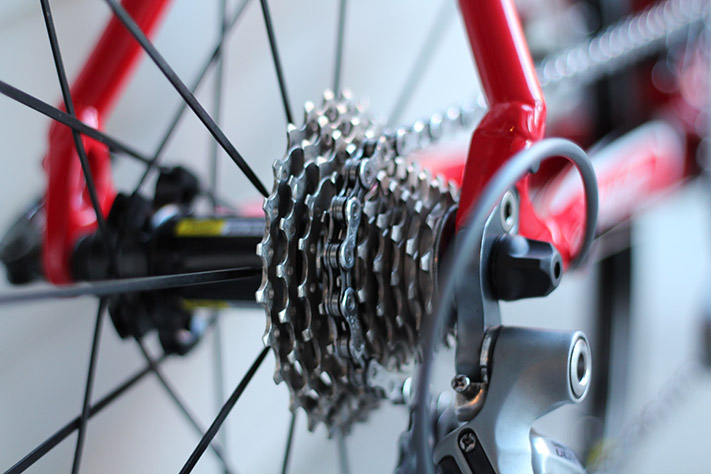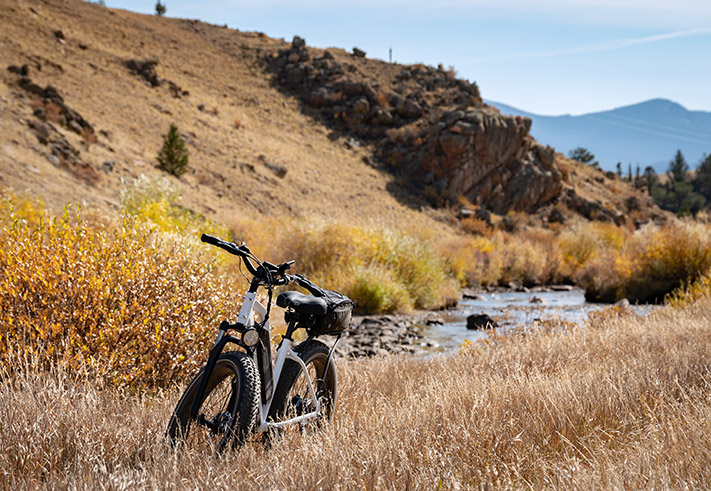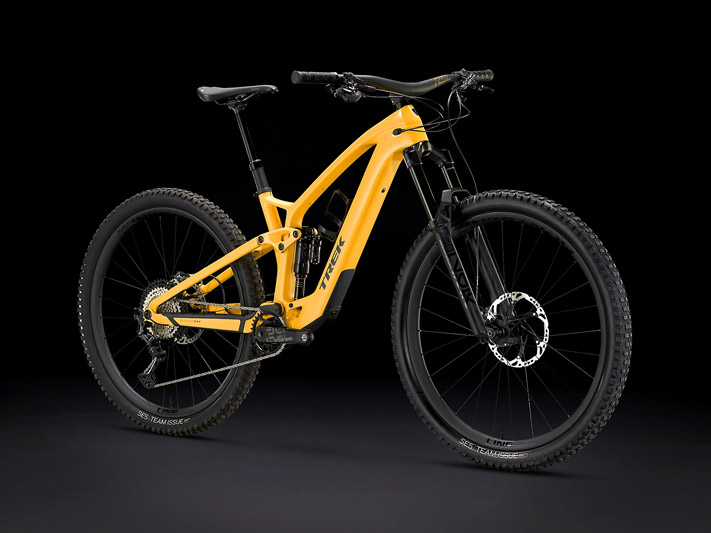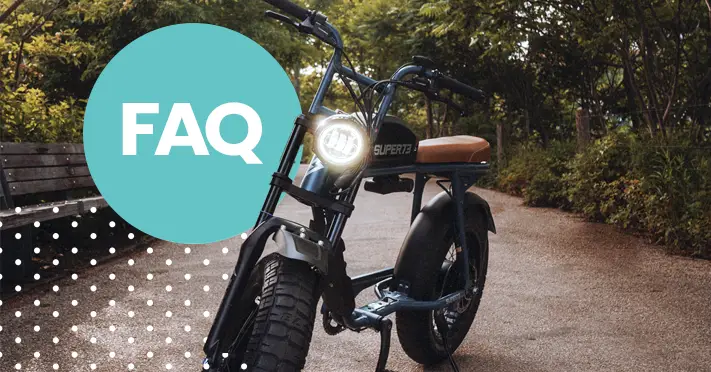Are electric bicycles good for commuting?
E-bikes are ideal for commuting. They carve through traffic much more quickly than cars and can allow a shorter commute time. You can use bike paths and shared-use paths instead of roads while riding some types of e-bikes, reducing traveling distance.
Your body will also thank you for the extra cardiovascular work. And because e-bikes assist you with a motor, you often won’t need a shower on arrival as you won’t be as sweaty.
Are electric bikes considered motor vehicles?
Currently, 39 states and the National Park Service consider e-bikes as bicycles.
Alaska has taken a hardline approach to electric bikes, which you must register and be licensed to ride like mopeds. It pays to check the laws where you live before making a final choice of e-bike to buy.
Can electric bicycles get wet?
All e-bikes will operate in the rain, with only the very cheapest unable to handle a heavy downpour. If crossing a river or stream, then be sure not to completely immerse the motor or battery connection.
Another tip is to not jetwash the electric components of the bike. Pressurized water is often well beyond the design limits of the e-bike’s waterproofing. Instead, take a sponge and bucket and gently clean those areas.
Do e-bikes require maintenance, and how much does it cost?

As with all high-dollar purchases, it pays to get your e-bike looked after. Annual service at a quality e-bike shop should cost $50 – $75 with component repair/replacement costing extra.
If you’re handy with bike repairs, service costs will fall, but it pays to let an expert run their eyes over the bike every year. They might spot something you’ve missed.
Do electric bikes work without pedaling?
Many do but not all. Under the Three Class E-bike System, Class 2 e-bikes have throttles and can travel up to 20 mph on throttle alone. Many major US e-bike makers like Pedego and RadPower sell throttle-powered, Class 2 electric bikes.
What are the differences between an e-bike, an electric scooter, and a regular bike?
- A ‘traditional’ or ‘analog’ bike has pedals, but no motor.
- An e-bike generally has a motor and pedals, and you sit on a saddle.
- An electric scooter generally has a throttle, no pedals, and you stand up while riding.
There are exceptions to the rule. For example, the Jetson LX10 is considered an e-bike despite being more of a sit-on scooter.
How do you choose your first electric bicycle?
- Ask yourself these questions:
- Why do you want an e-bike?
- How far do you want to go?
- How much money do you have to spend on it?
- Do you want to pedal or use a throttle?
- How fast do you want to go?
- How much cargo do you want to carry if any?
After answering those questions, you can start looking for the ideal electric bike. There are bikes to suit every need. For example:
- Commuter e-bikes will cover longer distances quickly.
- Utility e-bikes will carry your shopping over longer or shorter distances.
- E-cargo bikes are for commercial operations like delivery companies and stores that deliver goods to homes.
- Electric mountain bikes (eMTBs) will climb huge mountains with motor assistance and fly down trails.
- E-touring bikes will handle bikepacking expeditions, some on road and some off.
- E-bikes for seniors will simply make climbing hills possible for the rider where the rider may have struggled on an analog bike.
How durable are electric bicycles?

Most e-bikes will last five years or more if looked after well. You get what you pay for, however — a $5,000 electric bike will typically be more durable than one for under $1000.
There is a gray area, with higher-spec machines sometimes having more components that will need servicing. A cheaper electric bike with a rear-hub gearbox will require less maintenance than a more expensive bike with a 12-speed cassette.
How do electric bikes work?
In most cases, electric bikes can be pedaled like analog bikes. There are two types of electric bikes:
- E-bikes with pedal assist (PAS)
- E-bikes with pedal assist and throttles
Both have a computer called a controller. A throttle on the handlebar will tell the motor how much power to give to the drivetrain.
With pedal assist, sensors by the crank will tell the controller how much additional power to give to the drivetrain.
A full explanation can be seen here.
How many miles will an e-bike last?
That’s not a simple answer. Expect a well-maintained electric bike to last five years.
More expensive mid-drive electric bikes will offer warranties on their motors for up to two years. Many riders using them have put 10,000 miles into those motors in that time.
E-bikes often require more maintenance than analog bikes due to wear and tear on things like brake pads, chains, and gear systems. A chain may last 700 – 1,000 miles.
Cheaper e-bikes aren’t designed to last as long. However, hub motors on lower-cost e-bikes have far fewer moving parts than mid-drive motors, so they will often last longer.
Batteries will be guaranteed 500 – 1000 charging cycles. If you ride 40 miles per charging cycle, that could mean 40,000 miles!
How long does it take to charge an e-bike?
This depends on the size of the battery and the power of the charger. On most good e-bikes, charging will generally take 4 – 6 hours, but bigger batteries can take up to 8 hours, and smaller ones can take as few as 2 – 3 hours.
Never use a more powerful charger than the manufacturer allows, as this could cause a fire.
How much do e-bikes cost?

The cheapest new electric bikes can cost as little as $700. The most expensive can cost more than $10,000.
A lower-quality electric bike like a Himiway Zebra will cost just under $2,000.
A good midrange commuter electric bike like a Specialized Turbo Vado will cost in the $5,000 – $6,000 range.
A premium electric mountain bike like a Trek Fuel EXe 9.8 will cost close to $10,000.
How much do e-bikes weigh?
This varies a lot. Expensive, high-priced e-bikes will be more efficient yet weigh less for a given cycling distance than a lower-priced e-bike that has a big battery to compensate for inefficiency.
A typical low-to-mid-priced electric bike will weigh in the region of 60 – 70 lbs, whereas a very expensive carbon eMTB will weigh as little as 40 lbs.
The size of the motor and battery impacts the overall weight. A big bike with a 960 Wh battery will weigh much more than a smaller one with a 320 Wh battery, but the bigger e-bike will have a greater range.
Is getting an e-bike worth it?
We’re a bit biased, but yes. Getting an e-bike is worth it, even if you aren’t already an avid cyclist.
Here’s a suggestion: go out and ride one to see for yourself. Everyone who does immediately understands!
Between 2019 and 2020, analog bike sales in the US grew by 50%. E-bike sales grew by 145% in the same period.
Is riding an electric bike good exercise?
It may surprise you, but yes! A recent medical review of research showed that e-bike riding can improve mental health as well as heart and lung health.
If you are on pedal-assist mode, you still pedal the bike, but the motor enables you to climb hills you never could before. Because of this, the available evidence shows, people do ride faster, harder, and farther. This improves their health considerably.
What are the parts of an e-bike?
Most e-bikes still have pedals, wheels, a frame, a saddle, a fork, and gears like traditional bikes.
Electric bikes will have a computer to control the bike’s electronics and a display to show the parameters. This can be a screen or LED lights on the frame or handlebars.
All e-bikes will carry a battery that sits in the rack or frame.
There are two different types of e-bikes:
- Hub motor e-bikes have a motor in the wheel
- Mid-drive motor e-bikes have a motor in the pedal crank area
Both have sensors around the crank that tell the controller how much energy to give when pedaling on Pedal Assist (PAS) Mode.
Class 2 e-bikes have throttles in addition to pedal assist systems. Throttles are generally half-twist throttles on the handlebar that you use to tell the bike how much power to give to the motor.
What are the top e-bike brands?
The top global traditional and e-bike brands in the United States include Giant, Cannondale, Trek, and Specialized. These have a range of electric and analog bikes that range in price from between $2,000 – $10,000
Several e-bike-only brands have emerged in the last 10 years or so. These include Pedego, RadPower, Aventon, Jetson, and Lectric.
When were electric bikes invented?
Electric bikes have been around, at least in concept, for over 120 years. In 1895, Ogden Bolton Junior is credited to have patented the first design for a rear-hub motor-powered electric bike.
Thanks to few being able to afford cars, e-bikes took off in China in the 1990s with relatively short-range, lead-acid battery-powered e-bikes. Now there are more than 120 million on China’s roads — the equivalent of just over one for every three people in the United States.
When lithium-ion battery technology was invented, e-bikes, as we knew them, started to arrive in the US in the early 2000s. Thanks to improvements in cost, range, speed, and weight, they hit the mainstream in the 2010s.
Which electric bike is the best to buy?
There’s an e-bike for everyone!
- Top-end electric mountain bikes can put a smile on pro mountain bike riders’ faces.
- Mid-priced off-road e-bikes are used for hunting and fishing — and have even been used successfully to ambush Russian tanks in Ukraine by Special Forces.
- A lot of older people ride low-step and step-through electric bikes to get up hills they couldn’t on analog bikes.
Millions are using electric commuter bikes to beat the traffic. Even big logistics companies like UPS and FedEx use them to deliver parcels.
Who rides electric bikes?
Almost anyone can ride an electric bike!
Older people and those who have health problems find them easier to use than analog bikes. At the other end of the scale, serious mountain bikers find them lots of fun to blast around on trails. Between those two, couriers can use e-bikes to deliver packages and food from restaurants, families can use them to take their kids to school, and commuters can use them to cycle to work.



